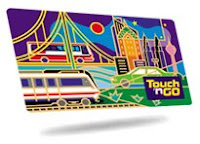The implementation of Electronic Government started since initiation of Multimedia Super Corridor (MS C) by the Malaysia Government. The implementation of e-government is to provide a better service to the public, bring benefits in businesses and the government itself. As for the public, they can save time and money by using the e-government services. In a recent survey, e-government in
C) by the Malaysia Government. The implementation of e-government is to provide a better service to the public, bring benefits in businesses and the government itself. As for the public, they can save time and money by using the e-government services. In a recent survey, e-government in
MyEG Services Berhad is a concessionaire for the Malaysia E-Government MSC Flagship Application. MyEG roles is essentially provides the electronic link between the Government and citizens and businesses. The portal provided by MyEG enables Malaysian to interact with numerous agencies within the Federal, State and the Local Government machinery providing services ranging from information searches to licence applications. The main Services Supplier that currently adopts MyEG E-Government services and solution are Dewan Bandaraya Kuala Lumpur (DBKL), Jabatan Insolvency Malaysia (JIM), Jabatan Pengangkutan Jalan (JPJ), Polis Diraja Malaysia (PDRM), Tenaga Nasional Berhad (TNB) and Telekom Malaysia Berhad (TMB). MyEG’s businesses are categorized into two strategic business divisions:
G2C services refers to services such as renewal of driving license, electronic bill payment, traffic summons and so on.
Government /
GES are non-Internet based services such as software and enterprise solution, system development and maintenance as well as services rendered at the E-Services Centers.
To learn more about MyEG services, click the following links:
http://www.myeg.com.my/overview.htm








 For e-Bay users, e-Bay recommends using only services provided by
For e-Bay users, e-Bay recommends using only services provided by 





 1. Customer buys or reloads the
1. Customer buys or reloads the 




